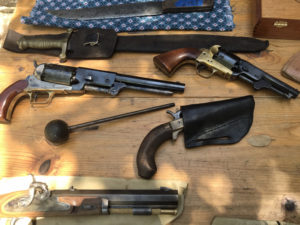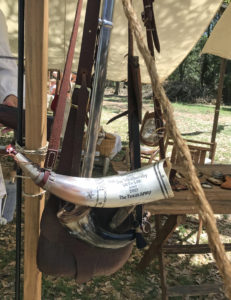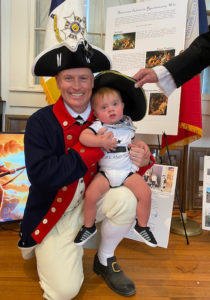This last weekend, I actually went out of my house/neighborhood and did something different. Something interesting and out in the real world, or something that resembled the real world, out there, beyond the keyboard and computer screen. I had a table for my books at a cultural event, the Folkfest in New Braunfels. Historically, New Braunfels was one of the German Verein-founded towns in the Texas Hill Country, one of those that I have written about in my historical series; the main reason that I was invited to the bash under the oak trees at the Heritage Society’s campus on the northern edge of town. The Adelsverein Trilogy touches on the circumstances and reason why more than eight thousand German immigrants ended up on the wild and unsettled Texas frontier in the 1840s. A consortium of German noblemen and princes hoped to make a tidy profit – and to do a good deed for their struggling countrymen – by taking up an entrepreneur grant in the independent Republic of Texas. They were honest in their hope to make the venture advantageous economically for them, which distinguishes them from many other ostensibly charitable enterprises of late. That the Adelsverein went broke within two years had more to do with the princely gentlemen overselling their program to eager potential immigrants and badly underestimating the costs in transporting them to Texas. That it resulted in a godly number of able, educated, independent-minded and patriotic new citizens turned out to be a bonus. It also resulted in Kendal, Gillespie and Comal counties being almost completely German-speaking for better than a hundred years, which explained the prevalence of dirndls and lederhosen worn with cowboy boots at the Folkfest.
The Heritage Society has moved a number of buildings of historical note onto the property; a dog-trot cabin, carpenter’s shop, a windmill, one-room schoolhouse. blacksmith shop and others. For the Folkfest, these buildings are inhabited by docents and volunteers, augmented by historical reenactors in tents and pavilions, eager to exhibit their skills and gear. The flintlock and black powder shooters shot their long rifles regularly during the two days, as did the cannon crew with their antique artillery piece. There was live music under the trees – a Celtic band, a children’s choir singing German folksongs, a clogging dance troupe, an array of country-western singers – and a children’s costume parade on Saturday, carrying on the tradition of a May Day parade established by the teacher of the first school in New Braunfels in the 1850s. A pair of charro performers demonstrated rope tricks and fancy riding skills in a temporary rink, the owner of a genuine 1913 Ford Model-T gave rides around the circuit of the grounds, and the owners of an authentic cowboy chuckwagon demonstrated making biscuits and cooking over a fire with iron Dutch ovens. In other years at Folkfest I have seen lace-makers showing off their skills, and carpenters demonstrating how to use templates and hand-tools to shape chair spindles and legs. Last year, the hayride was in a wagon pulled by a pair of horses, this year merely a trailer lined with hay-bales pulled by a tractor. But there was a good crowd, over this last weekend; families and couples having fun, listening to the music while sitting at the tables by the beer garden, under the great oak tree in the center of the grounds by the beer garden. There wasn’t a single mask in sight, and no social distancing that I could see. It all reminded me that not everything is awful and catastrophic – and that many of us are holding on tight to our history and our traditions.
- Weapons Array – the large revolver at upper left is a Walker Colt, which weighs nearly five pounds
- More weapons and gear
- Chilling by the Tent, 19th century style
- Your Author, with 1913 Ford
- Having a blast with antique artillery.
- Wee Jamie, the Revolutionary Baby





